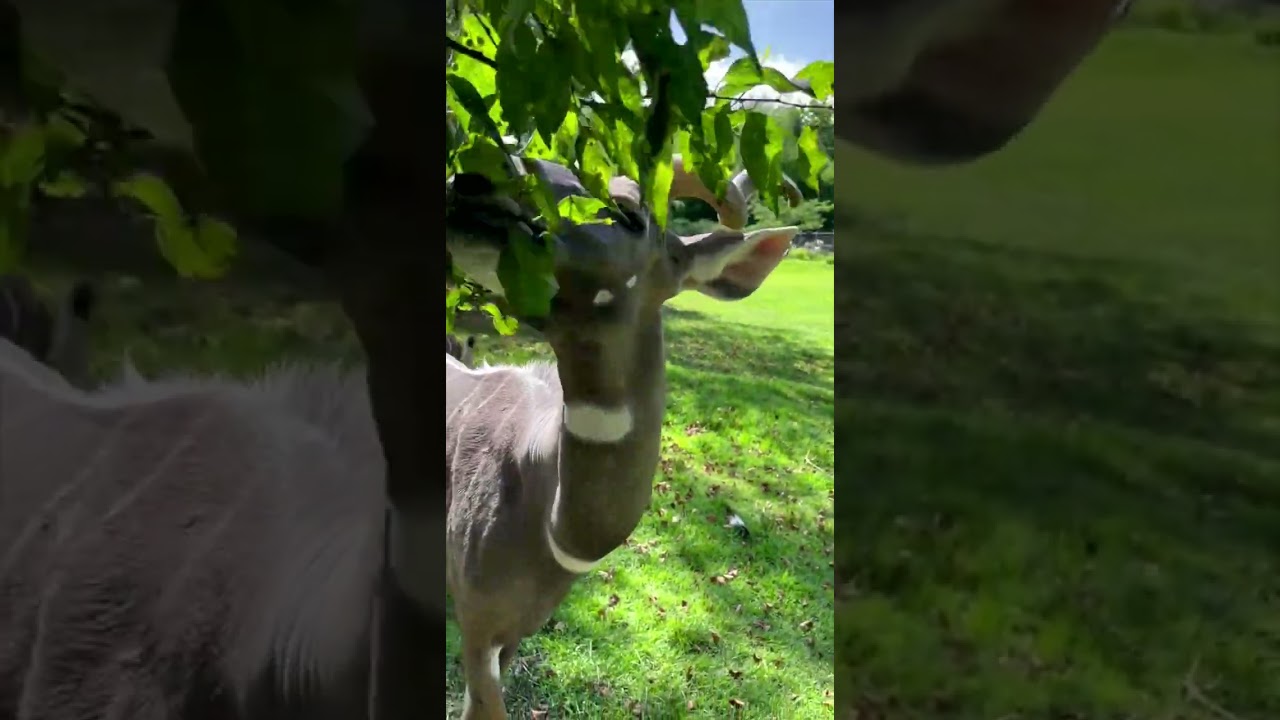Summary:
1. Introduction to Lesser Kudu and the Cincinnati Zoo
2. Unique Feeding Behaviors of Lesser Kudu
3. Lesser Kudu’s Diet and Digestive System
4. Lesser Kudu’s Horns and Their Importance
5. Conservation Efforts for Lesser Kudu
Welcome to the captivating world of the Cincinnati Zoo, where you can witness the wonders of nature up close. This article delves into the intriguing world of the Lesser Kudu, a mesmerizing species that calls the Cincinnati Zoo home. Join us to explore their unique feeding behaviors, diet, digestive system, magnificent horns, and the efforts taken for their conservation.
1. Unique Feeding Behaviors of Lesser Kudu:
The Lesser Kudu, a medium-sized antelope found in East Africa, has fascinating feeding habits. One of the most intriguing aspects is their inclination to feed during twilight and nighttime. This nocturnal characteristic provides them several advantages in their habitat, including avoiding competition for resources with diurnal species. Observing the Lesser Kudu as it gracefully grazes during these twilight hours is captivating.
2. Lesser Kudu’s Diet and Digestive System:
The Lesser Kudu’s diet consists of leaves, flowers, fruits, and herbs. Being selective browsers, they have developed the ability to extract nutrients efficiently from various plants. These antelopes possess a complex, four-chambered stomach similar to a cow’s. This unique digestive system allows them to effectively break down and ferment plant material, extracting valuable nutrients. The Lesser Kudu demonstrates remarkable specialization in its feeding habits through these adaptations.
3. Lesser Kudu’s Horns and Their Importance:
One cannot help but be mesmerized by the magnificent spiral horns of the Lesser Kudu. These striking features are present in both males and females, showcasing their importance beyond just being a symbol of dominance. The horns are crucial in communication, defense against predators, and even regulating body temperature. When fighting, males engage in an enthralling display of dominance by locking their horns and pushing against each other. Witnessing this spectacle is a testament to the unique adaptations of the Lesser Kudu.
4. Conservation Efforts for Lesser Kudu:
Conservation plays a pivotal role in preserving the extraordinary biodiversity of our planet, including species like the Lesser Kudu. The Cincinnati Zoo, international organizations and local communities actively participate in conservation programs to protect vulnerable wildlife populations. By raising awareness, supporting research, and implementing conservation strategies, these efforts strive to safeguard the habitats and ecosystems that sustain species like the Lesser Kudu.
Conclusion:
The Lesser Kudu’s feeding habits, diet, digestive system, and magnificent horns offer a captivating insight into the wonders of nature. At the Cincinnati Zoo, visitors have the exceptional opportunity to witness these remarkable creatures in action. By joining forces with conservation initiatives, we can ensure that future generations can continue to be enthralled by the fascinating beauty of the Lesser Kudu and the rich biodiversity of our world.
Support the ongoing efforts of the Cincinnati Zoo by donating or subscribing to their YouTube channel, where you can immerse yourself in exclusive wildlife experiences. Connect with the Cincinnati Zoo through their social media platforms and visit their website to learn more about their conservation work and upcoming events. Let us be stewards of nature and protect the magnificent creatures that share our planet.
*****
Source Description
Lesser Kudu Feeding – Cincinnati Zoo #shorts
http://support.cincinnatizoo.org/donate
Subscribe: https://www.youtube.com/user/CincinnatiZooTube/featured
Facebook: https://www.facebook.com/cincinnatizoo/
Twitter: https://twitter.com/CincinnatiZoo
Instagram: https://www.instagram.com/cincinnatizoo/
Find out more at http://www.cincinnatizoo.org

